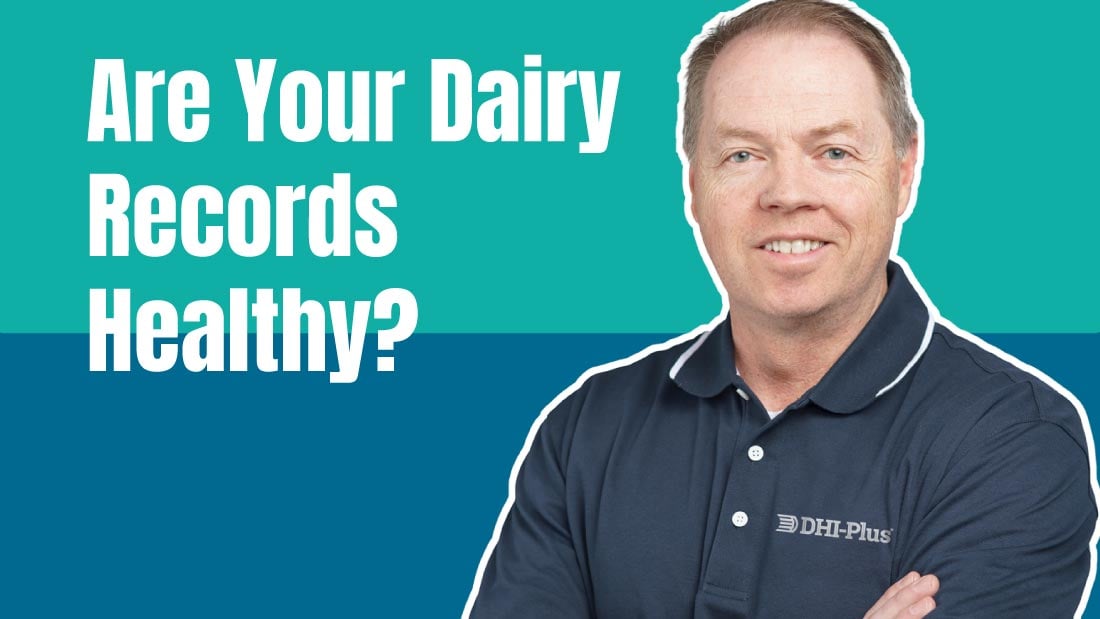Have you taken a look at your EMR lately? If you’ve recently visited your physician or doctor, you may have heard the term “EMR” or electronic medical record, mentioned during your visit. An EMR is a collection of your personal health data stored in a digital format and contains critical information about your medical care.
At Amelicor we’ve spent years managing electronic animal health data and treatment records for dairy cows. If I’ve learned one thing, it’s that there are significant benefits to recording cow health data properly. As an industry, we need to continue improving the level of detail in dairy cattle herd records.
Recording Health Data Properly for Dairy Herd Health Analysis
Precision dairy records require the right tools—a message I often share with my dairy clients. Recording accurate health records is a vital component of your dairy management software system. Proper dairy cow health monitoring—which requires keeping treatment records, recording vaccinations and antibiotic use, and recording transition health events—can help you make better decisions that enhance your dairy’s profitability.
For example, Is that cow you just treated for mastitis a chronic offender? What does your dairy farm software say about her history? She’s a mature cow now in her 3rd lactation, has she had metabolic issues in prior lactations? By accurately recording treatments, you’ll be able to see this data quickly and decide whether she’s worth treating.
Recording health data in dairy cattle management software and contributing it to the CDCB (Council on Dairy Cattle Breeding) is essential for accumulating enough data to make it valuable for the entire industry. With advances in genomics and health traits, accurate health data recording can also help you drive genetic progress in your herd. Amelicor makes it simple for you to authorize your records for use. Visit our website for information on how to authorize Amelicor to share your herd records with the CDCB.
Through my work with DHI-Plus customers, I’ve seen a wide range of health data recording practices. Some clients do an excellent job of recording treatments using dairy herd management software like the Rx-Plus feature in DHI-Plus. With these tools, they can effectively monitor transition health events.
Focusing on the following transition events is key to maintaining strong health data records for your herd:
- Mastitis
- Milk Fever
- Retained Placenta
- Displaced Abomasum
- Metritis
- Ketosis
- Lameness
- Pneumonia
Keys to Getting Started with Dairy Herd Health Management
- Work with your veterinarian to establish treatment protocols. This step is essential. Take the time to complete it thoroughly and schedule a review every six months to update and modify the protocols as needed. Techniques and strategies can change and your veterinarian should be actively involved in this process.
- Set up standard procedures for your hospital and maternity teams to ensure consistent treatment and care for your animals. Provide detailed, clear protocols for your staff to follow.
- Establish expectations for recording herd health data with your team. Determine how the data will be recorded into the DHI-Plus software. Here are some options:
- DHI-Plus Edge or Pocket DHI-Plus with RFID. Use RFID technology to efficiently record treatments cow-side and sync the data back to DHI-Plus.
- Rx-Plus Desktop Module. Quickly record treatments into the DHI-Plus software at a desktop computer using predefined treatment protocols.
- Vet Check Data Input Screen. Record health comments alongside reproductive results for a comprehensive view.
- Health with Macros Data Input Screen. Leverage the power of data entry macros to ensure consistency in how data is entered.
Recording and Monitoring Health Events in DHI-Plus
Efficiently recording and monitoring health events is crucial for effective dairy herd management. In this video, we’ll walk you through the different methods of entering health data into DHI-Plus, including DHI-Plus Edge with RFID, the Rx-Plus desktop module, and specialized data input screens like Vet Check and Health with Macros. You’ll see how these tools can simplify data entry, improve accuracy, and ensure consistent record-keeping.
The health and care of your animals should always be a top priority, and recording accurate health and treatment data is vital to achieving this goal. Remember, if it’s not recorded it didn’t happen. Proper record-keeping ensures you have the information you need to make informed decisions and improve herd management.
For more articles on cow health, visit the health data category page.


